The Roman warriors were apparently killed during a fierce battle in the first century C.E., probably with Germanic tribes.
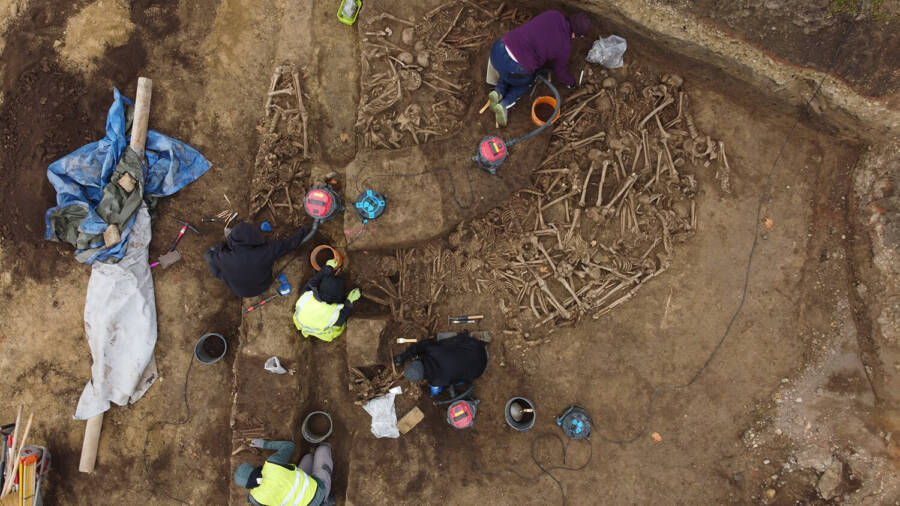
A. Slonek, Novetus/Vienna MuseumThe archaeologists found the remains of as many as 150 people at the site, and all of them were men.
During renovations of a soccer field in Vienna last fall, construction workers came across a startling sight: dozens of skeletons buried in the ground. Archaeologists investigated the scene and discovered more than 100 skeletons of Roman soldiers who seemingly died in a “catastrophic” battle.
Not only do the warriors’ remains tell a chilling tale about their violent final moments, but the mass grave itself is an “unprecedented” find in the region. While battlefields strewn with weapons have been found in Central Europe before, this is the first time that archaeologists have come across so many slain soldiers at once.
The Roman Skeletons Under The Soccer Field
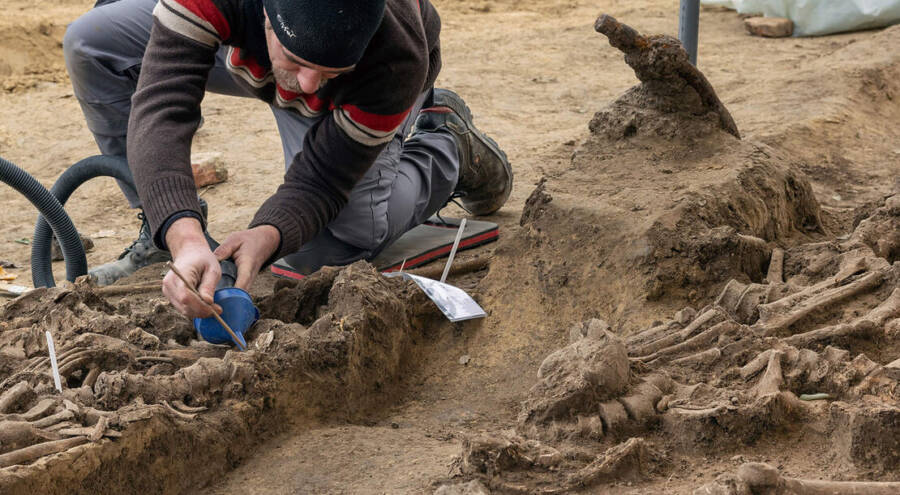
Reiner Riedler/Vienna MuseumAn archaeologist working to excavate the skeletons found under a soccer field in Vienna.
According to the Vienna Museum Magazine, the mass grave was discovered in October 2024 during renovations of a soccer field in Vienna’s Simmering neighborhood. Though archaeologists suspected that the bodies could be from a “plague pit” or the Second Ottoman Siege of Vienna in 1683, they found, to their surprise, that the remains were Roman and thus much older.
First, they were able to determine the age of the bones through carbon dating, which suggested that the soldiers had died between 80 and 230 C.E. Further study of items at the site — like a dagger and its sheath — narrowed the timeframe down to roughly the late first century.
Items like these also helped identify the soldiers as Roman. The dagger had a Roman design, as did a helmet found during the excavation. What’s more, archaeologists also found an array of nails from caligae, Roman military shoes.
Thus, the men were Romans who had been in Vienna around the first century C.E. And it appeared that they each died in a gruesome way.
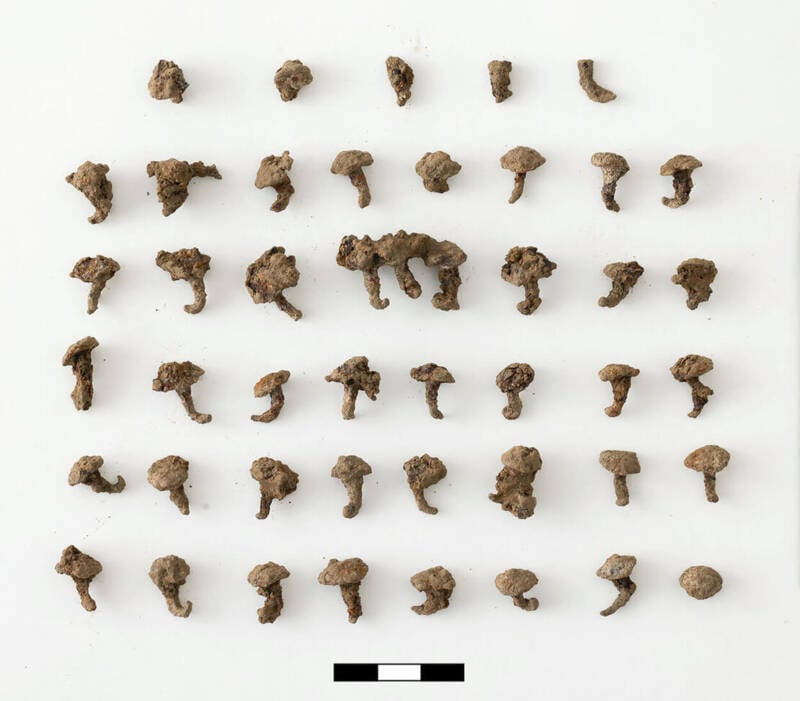
L. Hilzensauer/Vienna MuseumA collection of shoe nails from caligae, Roman military shoes.
At least 129 intact skeletons were identified at the site, though additional bones that were scattered during construction suggest that as many as 150 individuals were once buried there. All of the remains belonged to men in good physical condition between the ages of 20 and 30 years old — and each of them bore a fatal injury. The men had seemingly been killed by “blunt and sharp weapons such as spears, daggers, swords, and iron belts fired from a distance,” according to the Vienna Museum Magazine.
“Every skeleton examined so far has at least one injury that was inflicted at the time of death,” Michaela Binder, who led the dig, remarked.
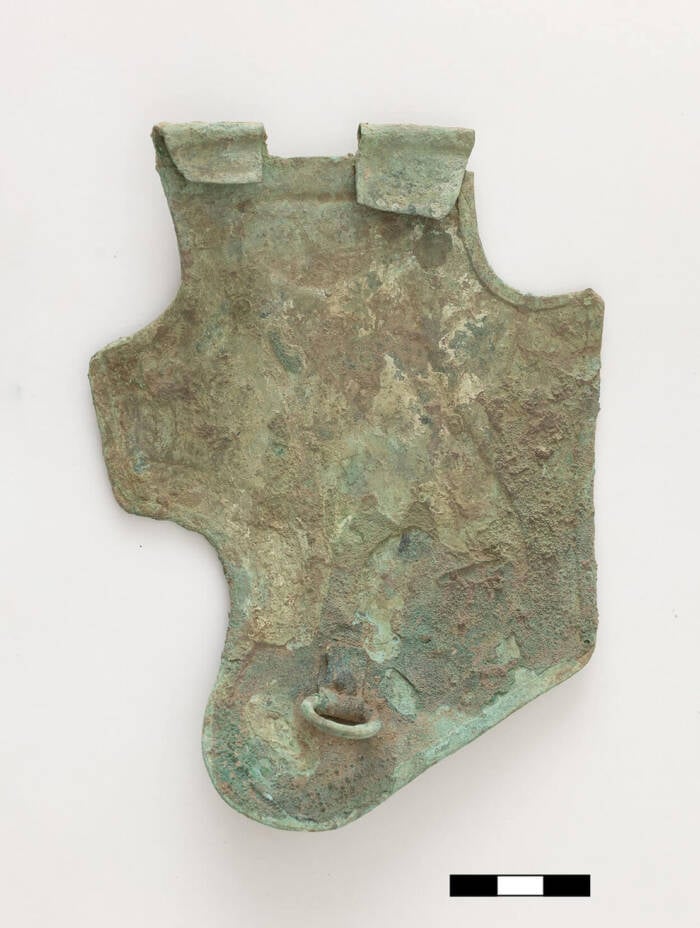
L. Hilzensauer/Vienna MuseumA cheek flap from a Roman helmet found during excavations at the site.
Thus, it seemed clear that the Roman soldiers had died during a “catastrophic event in a military context,” according to a public presentation given by the Museum of Vienna. They were also seemingly buried quickly in the aftermath, since Romans favored cremation burials at the time.
“For us Viennese archaeologists, this is a sensational Roman find, the most surprising in my career,” Kristina Adler-Wölfl, Head of City Archaeology (part of the Vienna Museum) told All That’s Interesting in an email.
So, what happened to these soldiers?
Theories About The Roman Soldiers’ Final Battle
For now, what exactly happened to the Roman soldiers in Vienna is a mystery. However, archaeologists have some hypotheses about what occurred.
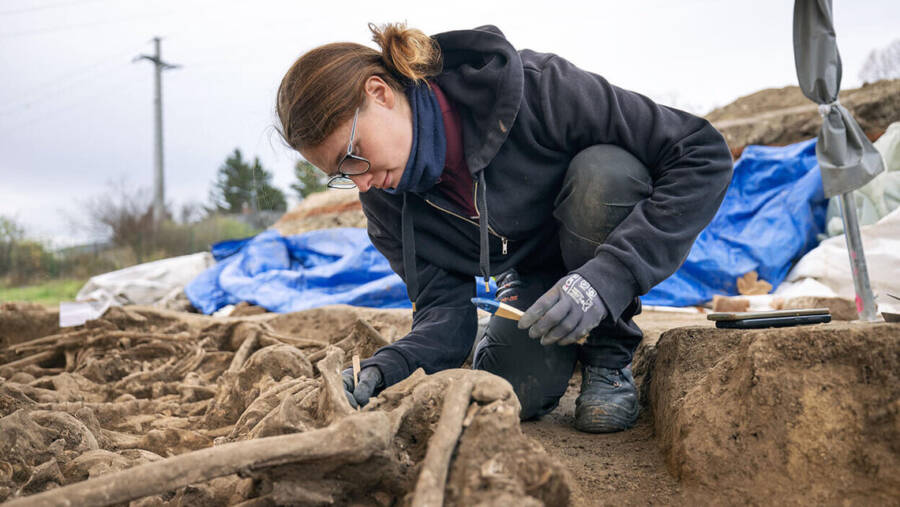
Reiner Riedler/Vienna MuseumArchaeologists found 129 intact skeletons at the site, each bearing a fatal injury which had seemingly occurred during battle.
For starters, they know that Romans were present in Vienna during the first century. For another, though the period between 50 and 120 C.E. is considered a peaceful one in Roman history, there were some bloody skirmishes on the outskirts of the Roman Empire.
Under Emperor Domitian (81 to 96 C.E.) there were written accounts of battles that took place during the Danube Wars. In 92 C.E., for example, an entire Roman legion was purportedly obliterated by Germanic tribes that came across the Danube border into Roman territory. This, in turn, incited Emperor Trajan (98 to 117 C.E.) to fortify this part of the border.
Though questions remain, the mass grave, filled with soldiers and their weapons, is a treasure trove of historical information. And as archaeologists have noted, it’s an unprecedented discovery in Central Europe.
“Within the context of Roman acts of war, there are no comparable finds of fighters,” Binder remarked in the museum’s public presentation. “There are huge battlefields in Germany where weapons were found. But finding the dead, that is unique for the entire Roman history.”
After reading about the first-century Roman soldiers whose remains were found in Vienna, go inside the complicated question of why the Roman Empire fell. Or, discover the incredible stories of some of Rome’s most famous gladiators.





